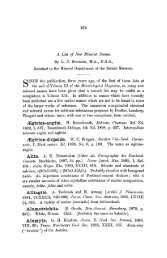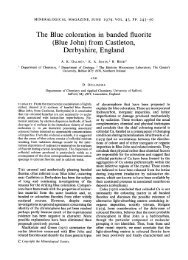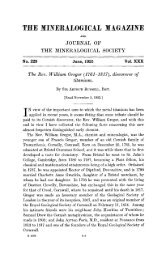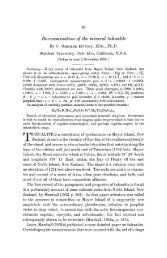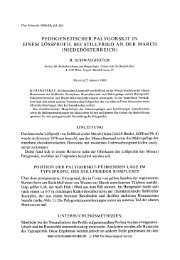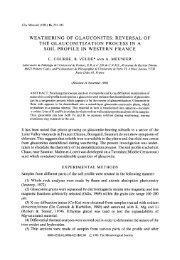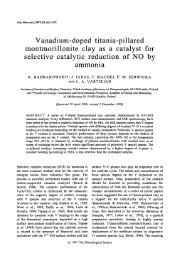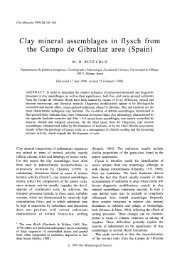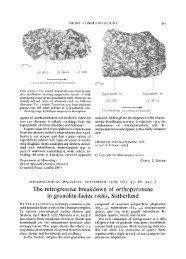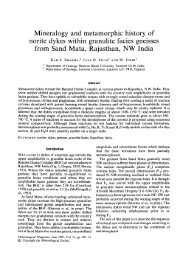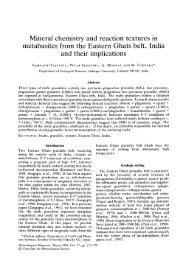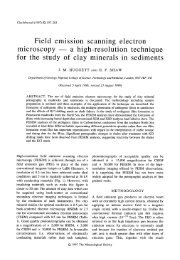the nature and origin of authigenic smectites in some recent marine ...
the nature and origin of authigenic smectites in some recent marine ...
the nature and origin of authigenic smectites in some recent marine ...
You also want an ePaper? Increase the reach of your titles
YUMPU automatically turns print PDFs into web optimized ePapers that Google loves.
244 T. G. Cole <strong>and</strong> H. F. Shaw<br />
FIG 3. Scann<strong>in</strong>g electron micrographs <strong>of</strong> sediments from <strong>the</strong> Bauer Deep. (a) Well-preserved<br />
siliceous micr<strong>of</strong>ossils <strong>in</strong> surface sediments (x 1200); (b) Corrosion <strong>and</strong> nontronite <strong>in</strong>fiIl<strong>in</strong>g <strong>of</strong><br />
siliceous micr<strong>of</strong>ossils <strong>in</strong> buried sediments (x 1200); (c) Nontronite <strong>in</strong>fill<strong>in</strong>g <strong>of</strong> siliceous<br />
micr<strong>of</strong>ossils (x 3200).<br />
that <strong>the</strong> silica source for <strong>the</strong> clay m<strong>in</strong>eral is biogenic <strong>in</strong> <strong>orig<strong>in</strong></strong>. Qualitative elemental<br />
analysis <strong>of</strong> <strong>the</strong> <strong>in</strong>fill<strong>in</strong>g clay material <strong>in</strong>dicated that it was composed predom<strong>in</strong>antly <strong>of</strong> Si<br />
<strong>and</strong> Fe.<br />
The iron necessary for <strong>the</strong> formation <strong>of</strong> <strong>the</strong> nontronite <strong>orig<strong>in</strong></strong>ates from <strong>the</strong> East Pacific<br />
Rise as a hydro<strong>the</strong>rmal precipitate. This is transported, along with o<strong>the</strong>r trace elements, as<br />
X-ray amorphous Fe- (<strong>and</strong> Mn-)oxyhydroxide flocs which are ponded <strong>in</strong> <strong>the</strong> Bauer Deep<br />
(Dymond & Veeh, 1975; Lonsdale, 1976; Heath & Dymond, 1977; 1981; Edmond et al.,<br />
1982; Cole, 1982). The Fe-oxyhydroxide probably becomes associated with <strong>the</strong> biogenic<br />
opal <strong>in</strong> <strong>the</strong> Bauer Deep sediments by coord<strong>in</strong>ation <strong>of</strong> Fe(III) to silanol groups (SiO-) at<br />
<strong>the</strong> surfaces <strong>of</strong> <strong>the</strong> dissolv<strong>in</strong>g micr<strong>of</strong>auna to form an Fe(III)-Si complex which is <strong>the</strong><br />
precursor <strong>of</strong> <strong>the</strong> nontronite. Harder (1976; 1978) has syn<strong>the</strong>sized Fe-rich layer-silicates,



